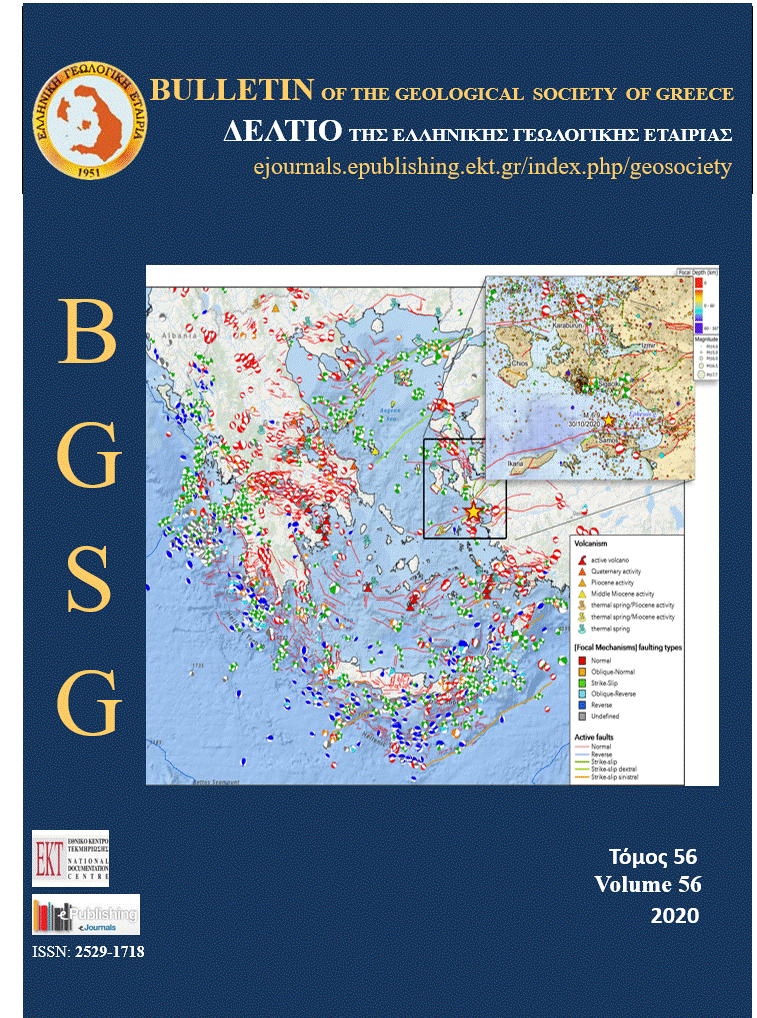Determination of amorphous matter in industrial minerals with X-ray diffraction using Rietveld refinement.

Résumé
A great variety of fine grained industrial rocks, which are valued by the industry contain variable amounts of amorphous or poorly crystalline matter, which is not easily detectable by the conventional mineralogical analysis methods based on X-ray diffraction (XRD). The quantification of amorphous matter in industrial rocks is a major task because it provides a thorough characterization of the raw materials and assists to interpret their reactivity. Among the most reliable methods used for quantification of amorphous matter, are those which are based on Rietveld refinement. In this study we prepared 1:1 mixtures of synthetic or natural calcite and quartz with 5-80% glass flour and added corundum (α-Al2O3) internal standard and applied the Autoquan2.80 © software based on the BGMN computer code to quantify the amorphous matter content. The mixtures with synthetic minerals yielded results with minimum absolute error due to the similar particle size of the minerals, the internal standard and the glass. By contrast, the mixtures with natural minerals displayed greater relative error due to the particle size difference between the minerals on the one hand and the internal standard and the glass on the other, due to the microabsorption effect. Moreover, preferred orientation was important in the case of natural calcite, due to perfect cleavage plane. Mixtures containing up to 25% amorphous matter did not display the characteristic hump at 20-30 °2θ, suggesting that the lack of the hump is not a safe criterion for the recognition of amorphous matter.
Article Details
- Comment citer
-
Christidis, G., Paipoutlidi, K., Marantos, I., & Perdikatsis, V. (2020). Determination of amorphous matter in industrial minerals with X-ray diffraction using Rietveld refinement. Bulletin of the Geological Society of Greece, 56(1), 1–16. https://doi.org/10.12681/bgsg.20940
- Numéro
- Vol. 56 No 1 (2020)
- Rubrique
- Petrology and Mineralogy

Ce travail est disponible sous licence Creative Commons Attribution - Pas d’Utilisation Commerciale 4.0 International.
Authors who publish with this journal agree to the following terms:
Authors retain copyright and grant the journal right of first publication with the work simultaneously licensed under a Creative Commons Attribution Non-Commercial License that allows others to share the work with an acknowledgement of the work's authorship and initial publication in this journal.
Authors are able to enter into separate, additional contractual arrangements for the non-exclusive distribution of the journal's published version of the work (e.g. post it to an institutional repository or publish it in a book), with an acknowledgement of its initial publication in this journal. Authors are permitted and encouraged to post their work online (preferably in institutional repositories or on their website) prior to and during the submission process, as it can lead to productive exchanges, as well as earlier and greater citation of published work.


